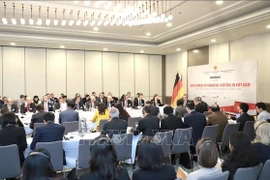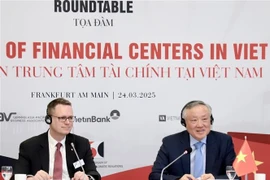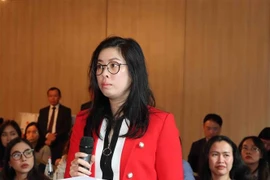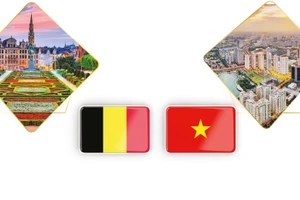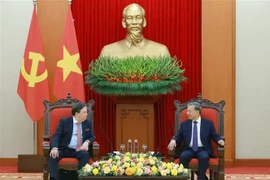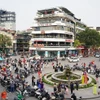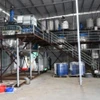HCM City (VNS/VNA) - Vietnam is developing a roadmap for establishing an international financial centre (IFC), with the aim of building connections with major IFCs both regionally and globally.
Speaking at a conference on creating a financial centre in Vietnam held in Ho Chi Minh City on March 28, Minister of Finance Nguyen Van Thang said Vietnam is “on the brink of a golden opportunity” to establish itself as a key player in the global financial arena.
He highlighted the nation’s advantageous geopolitical location, stable economic conditions, and an increasingly welcoming climate for investment.
In 2024, Vietnam’s GDP reached over 7%, ranking among the highest in the region and the world, he said.
The country is also among the top 15 most attractive countries for foreign direct investment (FDI) globally, he added.
The IFC in Vietnam will meet international standards with transparency, efficiency, a solid legal foundation, high-quality human resources, advanced technology applications and a safe, sustainable investment environment, according to Thang.
“Our top priority is ensuring market stability, effective risk management, and the protection of investor rights as we work to create a safe and sustainable investment environment,” he noted.
Draft resolution
Vietnam is drafting a National Assembly resolution to establish a clear legal framework for developing an IFC with incentives aligned to international standards.
The strategy aims to liberalise the financial sector, facilitating effective and transparent operations for international institutions.
It also seeks to explore advanced financial mechanisms, invest in fintech, blockchain, and AI, and promote green finance initiatives, including sustainable products and ESG-compliant investment funds.
The government plans to develop HCM City to become an IFC over the next five years.
In recent years, HCM City has been ranked on the official list of emerging global financial centres. It has risen seven spots to 98th in the Global Financial Centres Index (GFCI), its highest ranking since debuting at 102nd in 2022.
The Politburo approved the establishment of an IFC in HCM City by the end of 2024, alongside a regional centre in Da Nang.
The IFC will be located on a 9.2ha site in the Thu Thiem urban area, aiming to attract international investors and boost FDI inflows.
A 29-member steering committee, led by Secretary of the HCM City Party Committee Nguyen Van Nen, will oversee the project's development.
With a Gross Regional Domestic Product (GRDP) of over 73.8 billion USD, the city contributes 15.5% of national GDP.
The nation’s largest city is home to over 50% of Vietnam's fintech startups, as well as the country's first stock exchange.
The city’s unique time zone and proximity to major regional hubs make it increasingly attractive for investment.
Nguyen Van Duoc, Chairman of the municipal City People’s Committee, said that the IFC will be crucial for capital flow, innovation, high-tech development, and governance improvement.
The initiative offers HCM City a chance to improve resource allocation, increase business capital access, and bolster Vietnam’s global trade finance position, he added.
In addition to HCM City, Da Nang in central Vietnam is also expected to become an IFC in the region.
These centres aim to connect Vietnam with global markets, attract foreign institutions, and boost investment opportunities.
While the IFC concept is established globally, it is still new in Vietnam.
The conference in HCM City was attended by hundreds of domestic and international businesses, experts, and financial institutions./.
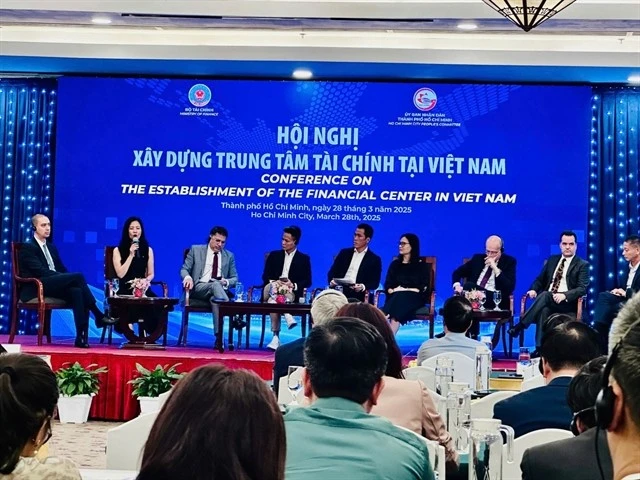
See more
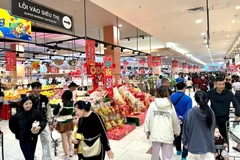
Proposed VAT reduction expected to boost consumption, businesses' growth
The proposed cut would apply to goods and services currently subject to a 10% VAT rate, lowering it to 8%, except for sectors such as telecommunications, finance, banking, insurance, real estate, metals, and mining (excluding coal), as well as goods and services subject to special consumption tax (except petrol).
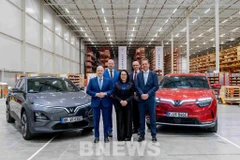
VinFast partners with DHL to deliver car spare parts in Europe
DHL will store spare parts for all VinFast vehicle models in Europe at its Holtum facility in Born, the Netherlands. In urgent cases, parts can be delivered within 24 hours.
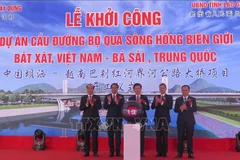
Construction begins on Vietnam – China cross-border bridge
The project has a total investment capital of 1.5 trillion VND (58.6 million USD). The main bridge spanning the Red River is a low-tower cable-stayed design consisting of three spans, with a total length of 230 metres and a width of 35 metres.

Honda recalls CB650R, CBR650R motorcycles in Vietnam
Honda has identified the cause as the inappropriate thickness of the paint layer on the gear shift arm, which prevents a direct and secure contact surface.
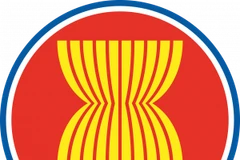
ASEAN opens doors for Danish businesses
Vietnamese Ambassador to Denmark Luong Thanh Nghi reiterated Vietnam’s and ASEAN’s shared dedication to improving the investment climate, ensuring the region remains a prime destination for global businesses, including those from Denmark.

Vietnam Airlines launches new Bangkok – Da Nang route
Manager of Vietnam Airlines’ Thailand branch Ngo Tri Hung said that the new Bangkok – Da Nang route marks a bold step of the airline in linking the two vibrant and promising tourism markets, helping bolster tourism cooperation between the two countries.
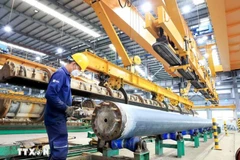
Vietnam strengthens position as attractive destination for FDI capital
According to the National Statistics Office, total registered FDI in Vietnam reached nearly 6.9 billion USD in the first two months of 2025, or a 35.5% increase as compared to the same time last year. Disbursed capital was estimated at 2.95 billion USD, up 5.4% year-on-year.

Vietnam’s forestry sector poised for breakthrough growth
As one of the three pillars of the agricultural sector, alongside livestock and fisheries, forestry is being developed, not only with a focus on sustainability but also as a multi-objective industry that maximises its economic, environmental and climate resilience contributions.
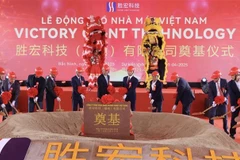
Work begins on two hi-tech factories in Bac Ninh province
Since the beginning of this year, Bac Ninh has attracted approximately 1.45 billion USD in foreign direct investment (FDI). To date, the province has granted investment registration certificates to over 2,400 valid FDI projects, with a total registered capital of 31.3 billion USD, ranking 7th nationwide in terms of investment attraction
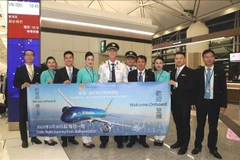
Vietnam Airlines resumes direct flights between HCM City, Hong Kong
The inaugural flight, VN595, departed from Hong Kong to HCM City on March 30, marking the first regular service on this route after a one-year suspension.
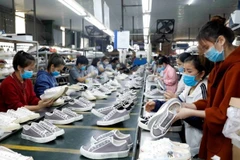
Vietnam companies in Myanmar face more challenges after earthquake
After a powerful 7.7 magnitude earthquake in Myanmar on March 28, all Vietnamese businesses were reported safe, but trading activities will face significant obstacles, the Vietnam Trade Office in Myanmar said.
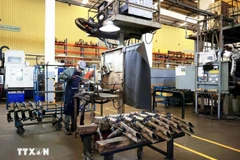
Foreign investment attraction flourishes on better business climate
The northern localities of Bac Ninh, Ha Nam, and Hai Phong attracted substantial foreign investments in the first quarter of 2025, including those from world-leading economic conglomerates with advanced and environmentally-friendly technologies.
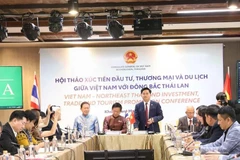
Vietnam, Northeast Thailand strengthen investment, trade, tourism ties
There is untapped potential for economic cooperation between the two sides, particularly in infrastructure and logistics, agricultural production and food processing, renewable energy, creative technology-innovation, and tourism.
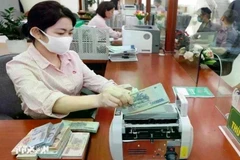
Reference exchange rate down 6 VND at week’s beginning
The State Bank of Vietnam set the daily reference exchange rate for the US dollar at 24,837 VND/USD on March 31, down 6 VND from the last work day of the previous week.

Vietnam Airlines launches direct service to world’s largest airport in China
Vietnam Airlines plans to open and resume 15 international flight routes in 2025, continuing to expand its flight network to countries such as Italy, Denmark, the Middle East, Russia, and China
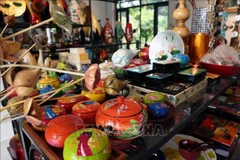
Hanoi boosts economy through craft village development
Hanoi is implementing various initiatives to develop local craft villages.

Vietnam’s garment-textile industry stitching a greener, smarter future
Supported by 17 next-generation free trade agreements (FTAs) already in effect, the industry is poised for further growth, targeting 48 billion USD in export revenue this year.
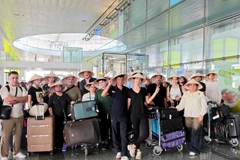
First charter flight from Iran lands in Hanoi, boosting tourism ties
Charter flights offer a swift, direct connection between the two nations, unlocking potential for broader cooperation in aviation, trade, culture, and education.
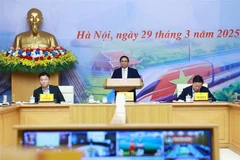
PM urges completion of North-South expressways by year-end
Chairing a meeting between permanent Government members and inspection teams for expressways nationwide in Hanoi on March 29, PM Chinh, who is also head of the State Steering Committee for Key Transport Projects, stressed that achieving a growth rate of at least 8% in 2025 and double-digit growth thereafter hinges on public investment.
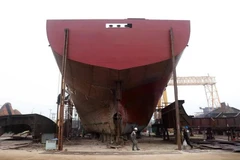
Ample room to float Vietnam’s shipbuilding industry
As domestic and global demand for new ships continues to rise, Vietnam's shipbuilding industry has significant potential for growth.
